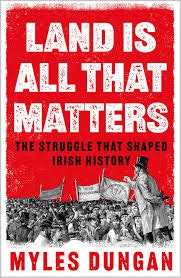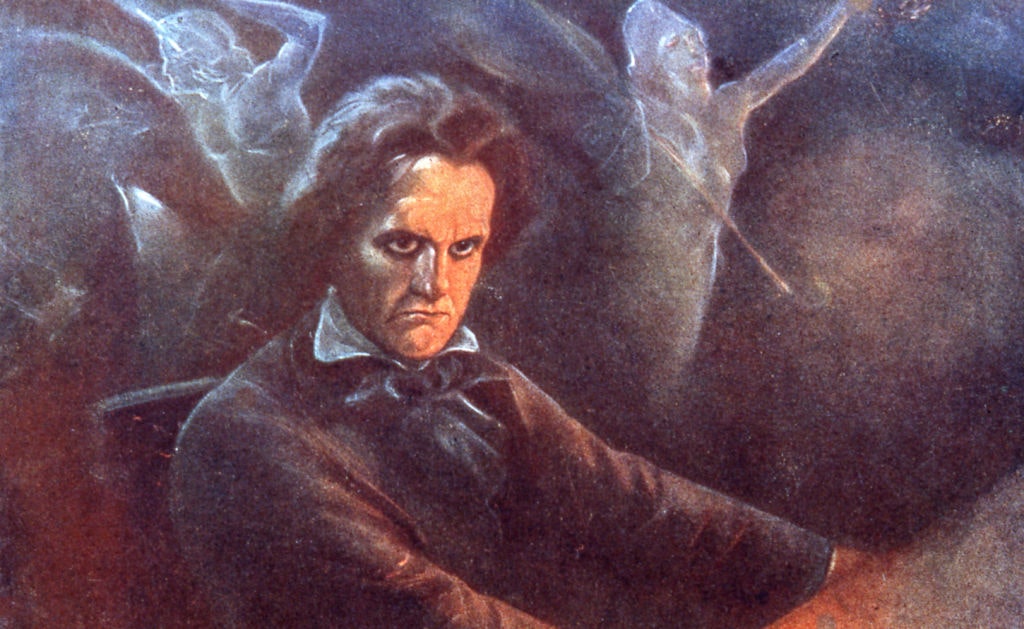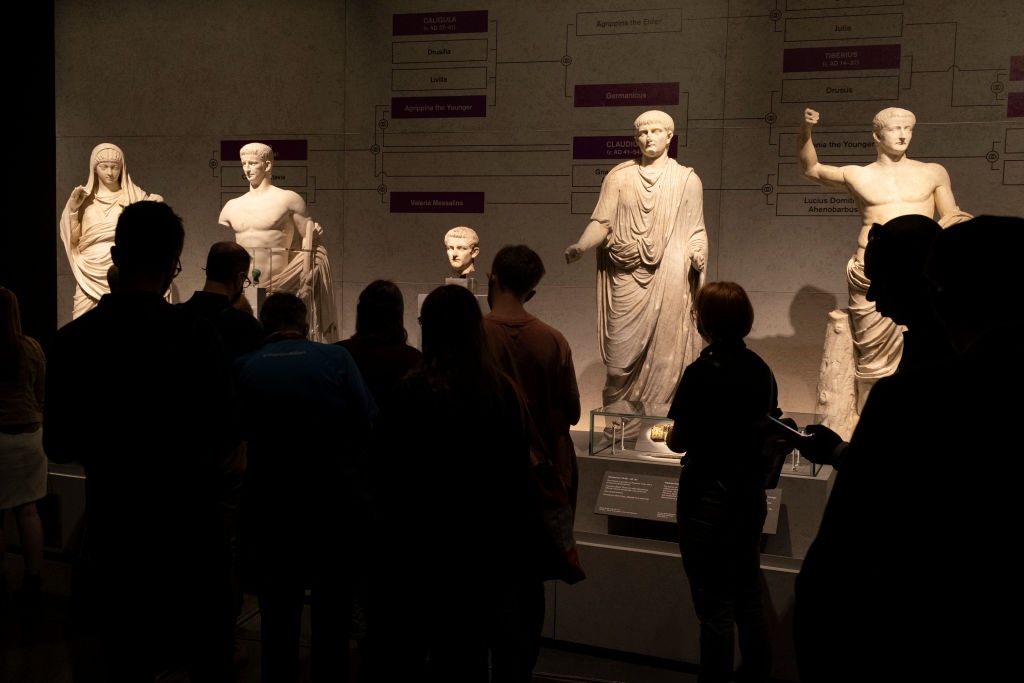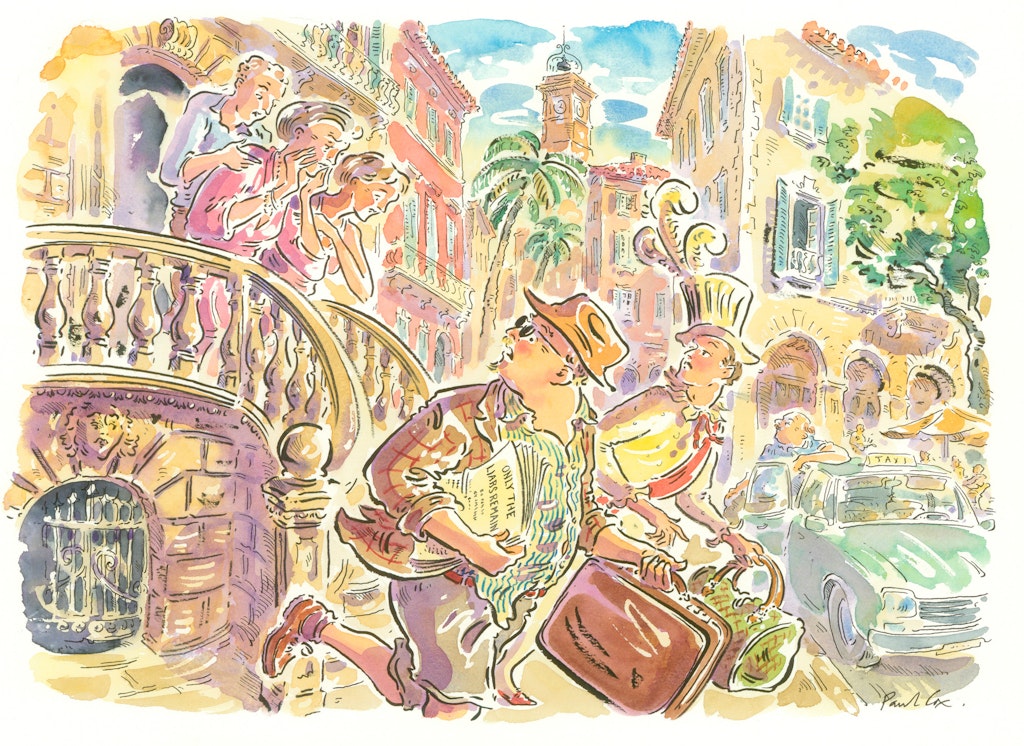The 300 Years’ War
How conflict over land ownership shaped conflict over Ireland

During Irish summers of the 1980s, my brother and I would buy lollipops in the local pub, which functioned by day as a newsagent and grocery. It was a shebeen really, little bigger than a confession box with greasy fly catchers dangling from the ceiling like stalactites. If we gave the ancient proprietor any backtalk, she ejected us with no lollies, screaming, “Your relative got my relative hanged!”
That hanging occurred in 1824. The scaffold sat on the crest of a long gorse-covered hill that overlooked our house in Galmoy. Five other men were executed as a crowd of twenty thousand watched. They in turn were watched by armed militia and dragoons. In the event, the only intervention was an old man urging his son to, “Die like a man!”
Kilkenny’s gentry chose this hill deliberately. One night a few months earlier on the narrow road adjoining it, John Marum, a rapacious land agent and my distant ancestor, was murdered at a spot still known as Marum’s Turn.
That turn, that hill and its secrets — five died protesting their innocence, one was silent — held a morbid fascination for me growing up. It still does. Not least because the violence was part of a wider rebellion — but one that is not generally recognised as such and certainly not so celebrated in song as, say, the United Irish Rebellion of 1798 or the Easter Rising of 1916.
This is more than an oversight according to Myles Dungan. In
, his new history published last month by Head of Zeus, he explains that “if you like your Irish rebels to be lethally effective,” Murum’s killers were part of a movement that deserves, “a place in the pantheon of Irish- mischief-makers”.
When English followers of the legendary “Ned Ludd” were smashing steam-powered looms by moonlight, the followers of the equally mythical “Captain Rock” in an Ireland bypassed by the Industrial Revolution enacted vigilante justice in the countryside. Threatening letters, hamstrung cattle, arson, beatings, cropped ears, mock executions, and murder celebrated by hilltop bonfires were their methods. Their targets were landlords and their middlemen.
Besides its wider argument, Land Is All That Matters demonstrates that “midnight legislators” are a constant in Irish history. They go by many names: “Houghers, Whiteboys, Rightboys, Rackavallas, Lady Clares, Black Hens, Terry Alts, Thrashers….” While the traditional heroes of the Irish drama like Daniel O’Connell and Charles Stewart Parnell enjoy monuments on Dublin’s main boulevard, Captain Rock skulks off stage.
Dungan turns the spotlight on “the guilty my lord type of Irishman” and describes the inequities that inspired his disciples. At the time of the Galmoy hanging, all the land in a country of almost seven million was owned by 10,000 people, representatives of a minority who controlled the courts, army and public administration. But, since most of those landlords were Protestants, rebellions inevitably carried a sectarian edge. Dungan’s chilling descriptions of tactics like “left-handed marriages” make it clear that Captain Rock was no Robin Hood: “prosperous farmers were punished for their wealth by the deflowering of their daughters and by demands for the payment of dowries to ensure that the rapist would ‘do the right thing’ and wed the young girl…”
Those looking for familiar fables of heroic sacrifice and perfidious Saxons then must look elsewhere. The history of Ireland’s “300 Year War” is a more earthy affair. It is also a triumph. If Keir Starmer hopes to understand England’s most troublesome neighbour, it’s essential reading. As Thresa May and Boris Johnson can attest, Ireland has a habit of intruding into British Politics at the most inconvenient moments.
The Irish Land War is conventionally seen as a strictly Victorian affair. A belated result of the Potato Famine, it reached its climax in the 1880s in the ill-starred alliance of Gladstone and Parnell. If people know anything about this campaign, it’s that it gave the world the word, “Boycott”. Rest assured, Charles Boycott — the land agent ostracised by tenants of the Co Mayo estate he managed — makes an appearance but only well into the second half of this big book.
I didn’t think I’d make it that far. I blame Daniel Yergin for my low expectations. The Prize: the epic quest for Oil, Money and Power retold the story of the 20th Century with such originality that a new historical subgenre was born. Yergin’s 1990 book fuelled a fad for high-concept popular histories that turned familiar narratives into the biography of one commodity. It may be mineral (Salt: A world history), animal (Cod: a biography of the fish that changed the world) or vegetable (Potato: a global history). The nadir of this craze is perhaps Peter Frankopan’s The Earth Transformed, “a major history of how a changing climate has shaped our world” which somehow manages to be duller than someone discussing the weather for 736 pages should be.
Hence the trepidation with which I picked up Land Is All That Matters. That land ownership was the “struggle that shaped Irish history” seemed absurdly reductionist. But I was rapidly convinced. Certainly, there is nothing tendentious about Dungan’s relentless focus on agricultural property. It is indisputably the country’s main resource. It wasn’t the loquacious natives that attracted the Normans and their successors across the Irish Sea. Dungan is also aware — thank goodness — that the minutiae of conveyancing can be less than riveting. Scarcely a page goes by without some ghoulish anecdote to remind us of the stakes.
Dungan shoots with a wide lens, tracing the conflict’s origins back to the 1640s (and the Ulster uprising that Cromwell used to justify his massacres) and its denouement in the 1940s long after the Quality vacated Dublin Castle. He complicates the “old binary” drummed into Irish schoolchildren that “a dogged and unified tenantry opposed an oppressive and seigneurial landholding elite and, courtesy of inspired leadership and peasant cohesion, routed the forces of feudalism”.
Duncan does not care for the word Revisionist — any new history that is not, he says, is redundant. Fair enough. Let’s say then that Land is all that Matters is an overdue digest of new thinking about plantations of the Tudor and Stuart era, 18th Century agrarian secret societies, the Land League in the 19th Century and the Wyndham Land purchase Act of 1903 — a massive, muddled and murky landscape that confused English politicians call “the Irish Question”.
… when Dungan talks about colonialism it is the beast itself, red in tooth and claw
For Dungan, that question boils down who owns Ireland’s fields, something decided first by foreign invasions and plantations and latterly by native banditry and politics. Dungan’s practical approach rescues a useful word much misused in academic circles. Colonialism has become one of those term like Fascism employed so elastically as to be meaningless; those weary of demands that Harvard, Feminism and Star Wars “decolonize” will be relieved to know that when Dungan talks about colonialism it is the beast itself, red in tooth and claw.
Largely a contest between Catholics and Protestants in the 17th Century, things had changed by the 1800s even before the Potato Famine’s brutal cull. My unlucky ancestor, for example, was slain by fellow Catholics to stop him buying the land of a local Protestant who treated tenants fairly.
As the 20th Century approaches, contemporary resonances mount up. Anyone familiar with Say Nothing, Patrick Radden Keefe’s account of omertà in 1970s Northern Ireland, will have Déjà vu reading about Lord Adare casting out hundreds from his Donegal Estate in 1860 after the assassination of his Scottish steward. The evictions were “Black Jack” Adare’s revenge on the locals who protected his agent’s murderer, telling police that “the fairies came out the rocks and killed him”.
Say Nothing describes how Sinn Féin became the political player it is today in Dublin, Belfast and London by a deliberately ambiguous strategy of carrying “an Armalite in one hand and a ballot box in the other”. Dungan’s book shows that this is nothing new. Indeed, he makes the parallel explicit, describing how “Irish radical movements advanced with the ploughshare in one hand and the ballot box in the other.”
Parnell, the parliamentary lion, admitted as much in 1880: “A true revolutionary movement in Ireland should, in my opinion, partake of both a constitutional and illegal character.” Dungan says Parnell and his colleagues knowingly dabbled, “in incitement to violence, either indirectly, through inflammatory speeches, or less obliquely by the covert encouragement of punitive actions against those who had contravened ‘Land League Law’.”
This brazen strategy landed Parnell briefly in Kilmainham Jail. When William O’Brien, a fellow MP and Land Leager, was locked up, he “refused to wear prison clothing or perform menial prison duties,” a gesture that Dungan notes, “would become extremely familiar.” It is equally difficult not to think of Bobby Sands’ fatal hunger strike reading the 1887 description from the London Daily News of a fiercely resisted eviction in Co Clare, “the peasant will not tire first. She is by temperament one of the most tenacious of human beings in a course of passive resistance. The soldiery will probably be the first to yield to the strain.”
Victorian Britain’s exhaustion with the Irish Question may also be heard in the despairing analysis of a Tory Chief Secretary: “for 120 years British bayonets have backed up landlords in extracting excessive rents, and have supported them in grossly neglecting their tenantry. What is the result of these 120 years? — the tenants have combined against the injustice and persecution…”
As the new century dawned, Westminster turned on its most loyal Irish subjects. In a series of parliamentary Acts, Irish landlords were incentivised to sell, initially through generous bonuses but eventually through compulsory purchases. “Peasant proprietorship” would, it was hoped in Whitehall and Dublin Castle, rob militant Irish nationalism of its base and create a conservative class invested in the status quo. This was only partially successful — it is possible to be conservative and nationalist after all, but certainly it was a revolution in ownership. 1916 may be Year Zero in Ireland’s national myth but for Dungan “the peak years were 1906-8, when almost 100,000 holdings changed hands. The process came to a halt shortly after the assassination of Archduke Franz Ferdinand…”
This final section again reminded me of Yergin’s The Prize, where oil-rich but otherwise poor lands had unfair concessions imposed on them by Western oil companies. As decolonisation gathered pace, the countries that eventually formed OPEC gradually asserted independence. Demands for better terms from the Majors were at first rejected, then grudgingly granted to stave off nationalisation.
Dungan describes a similar a pas de deux. One result of the departure of the landlords was how the Irish, lacking a common enemy, turned increasingly on each other. Some members of what was then called the Lower Orders came to feel duped. “Viewed dispassionately, the story of the Land War is of how small farmers, and their Fenian allies, were exploited by a new elite to shake the money tree and topple the aristocracy from the uppermost branches.” Tillage farmers turned against graziers, “strong farmers” against landless labourers and so on.
You don’t have to be a raging Marxist to see this squabbling for the spoils was a result of colonial managers pitting classes against one another and coopting local elites. Bourgeois Catholics invested in Empire literally and emotionally. The many Irish Edwardians who enlisted in WW1 viewed the Easter Rising as gross treachery. Class conflict added fuel to the Civil War that followed Independence in 1921. It also explains why Ireland’s first government was so rigidly conservative.
The Land War rumbles on with new combatants
If Ireland’s experience offered other colonies, “a persuasive template for other agrarian revolutions” it also should have warned countries as diverse as India, Algeria and Vietnam that independence would not be a panacea. Colonialism has a long tail. In a sense Dungan’s epic has no ending. The Land War rumbles on with new combatants. What size farm is economically feasible continues to be debated; government policy still dances to the dairy farmers’ tune — to the chagrin of rural peers.
Dungan concludes his revelatory history urging patriotic demigods like Wolfe Tone and Padraig Pearse to move over and let unfamiliar names like James Fintan Lalor, Thomas Davis or John Mitchel be inscribed in the Connemara marble of the Gaelic pantheon. That is unlikely — national myths are rigid things — and perhaps that is for best. One suspects that Captain Rock prefers to remain anonymous. His services may yet be needed.
Enjoying The Critic online? It's even better in print
Try five issues of Britain’s most civilised magazine for £10
Subscribe














